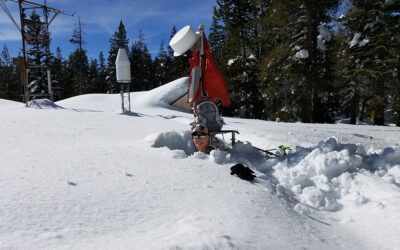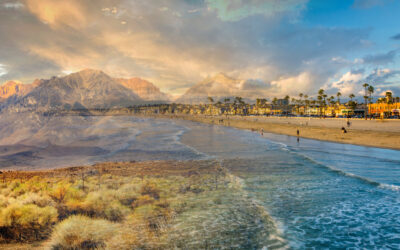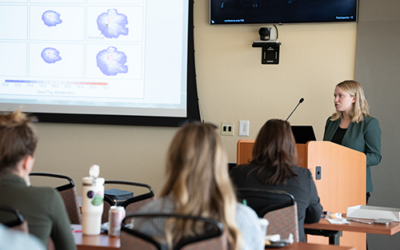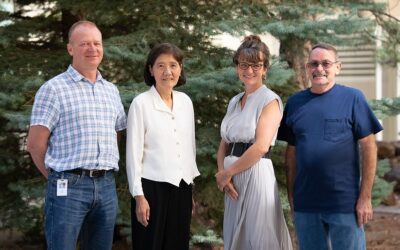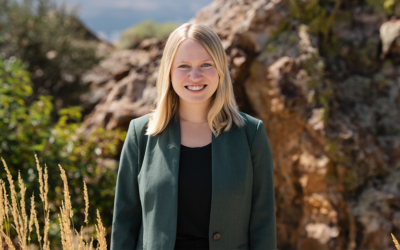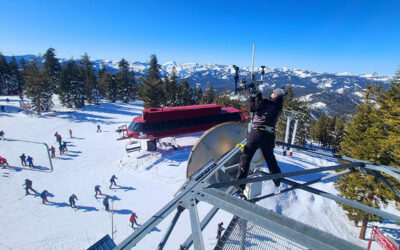DRI’s Anne Heggli is partnering with the National Weather Service to understand flood risk from rain-on-snow storms in real-time, protecting communities and enabling water conservation throughout Nevada and California.
DRI’s Hans Moosmuller on Antarctic Expedition to Investigate the Impacts of Pollution Near the South Pole
Hans Moosmuller, Ph.D., joins two Chilean scientists from the Center for Environmental Technologies (CETAM) of the Universidad Tecnica Federico Santa Maria on an expedition to Antarctica’s Unión Glacier, located just a thousand kilometers from the South Pole.
Can Scientific Ingenuity Turn the Clock Back on Climate Change?
An interview with atmospheric scientist David Mitchell, Ph.D., who first proposed research into the climate intervention research of cirrus cloud-thinning.
Meet DRI Atmospheric Modeler, John Mejia
John Mejia, Ph.D., is an associate research professor of Atmospheric Modeling at DRI. He was recently awarded a Mid-Career Advancement Award from the National Science Foundation (NSF) to support his research on climate change impacts to urban communities, including urban heat islands and air pollution.
Meet Ariel Choinard, Project Coordinator for CNAP & Southern Nevada Heat Resiliency Lab
Ariel Choinard, M.A., started at DRI in February 2023 as the project coordinator for the California-Nevada Adaptation Program (CNAP) and the new Southern Nevada Heat Resiliency Lab. She is working with Tamara Wall, Ph.D., to build connections between scientists, community members, and community organizations to co-produce solutions, adaptations, and resilience to climate hazards.
DRI’s CNAP Project Selected as Regional Model for Building National Climate Adaptation
DRI is leading the way in building regional climate resiliency through the California-Nevada Adaptation Program, which will prepare communities for local-level action to address climate hazards including extreme heat and wildfire smoke, water scarcity, and coastal flooding.
Remembering Peter Wagner
The Peter Wagner Memorial Endowment was established in 1981 by Sue Wagner, his wife and former longtime Nevada legislator and Lt. Governor, family, and friends. We thank Sue Wagner for establishing this endowment in Peter’s memory and their continued support.
Annual Awards Presented to DRI Faculty and Staff at 2023 Celebration of Science
On September 26 & 28, DRI held awards and recognition ceremonies at our Reno and Las Vegas campuses to honor eleven scientists and staff members for their achievements. Along with the below awardees, several faculty and staff were recognized for their long-term service to DRI for up to 25 years.
DRI Recognizes Andrea Gordon as the 2023 Peter B. Wagner Memorial Award-Winner for Women in Atmospheric Sciences
DRI is pleased to announce that the 25th annual Peter B. Wagner Memorial Award for Women in Atmospheric Sciences has been awarded to Andrea Gordon of the University of Oklahoma. An award ceremony commemorating her achievement was held at the DRI campus in Reno on Sep. 21, 2023.
Making it Snow: A Brief History and Review of the Science Behind Cloud-Seeding
The snow-inducing technique called cloud-seeding has been around for more than 60 years. Although not a panacea for drought-stricken regions, cloud-seeding can increase seasonal precipitation by about 10%. In the Reno area alone, winter cloud-seeding efforts are estimated to add enough water to supply about 40,000 households for a year.
